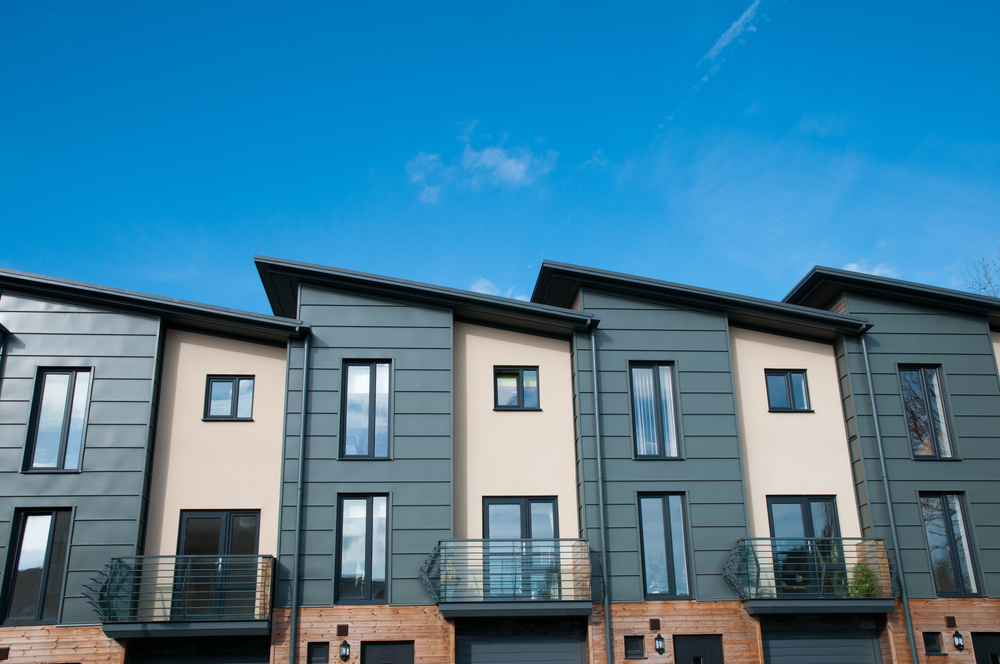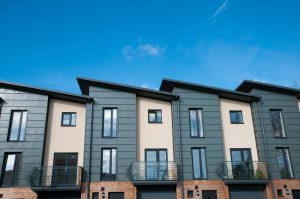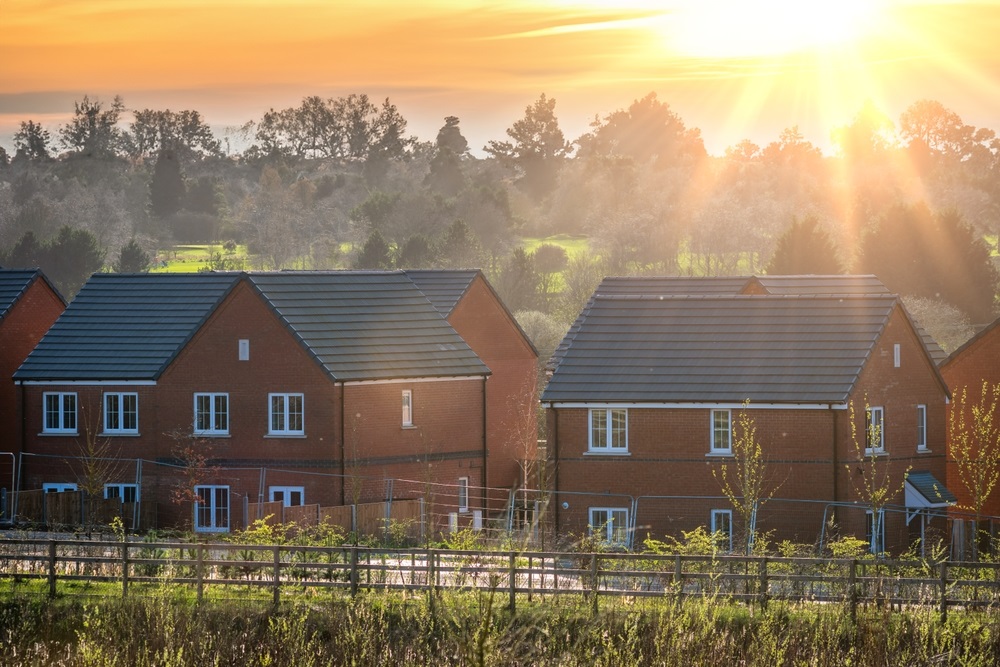Michelle Niziol, CEO of IMS Property Group and Michelle Niziol Ltd, explains what custom-build homes are and cites the example of the Graven Hill community
UK housing crisis
According to a recent report by the housing charity Shelter, up to three million new homes must be built in the UK over the next 20 years, just to keep up with the demand from our rising population.
“A lack of readily available housing has led to a drop in the numbers of young families moving into ownership, the rise of pensioners in insecure unaffordable private rentals, and the homelessness that scars our society” – Shelter charity report.
When combining these housing statistics with the fact that fears over the impact of Brexit have further depressed the UK housing market, it becomes painfully clear that something drastic needs to occur within the next few years in order to stave off a significant rise in housing struggles amongst not only the more vulnerable of our society, but hardworking middle-class Brits as well.
In an effort to combat this issue, a unique form of home purchasing and building has emerged in the UK that many are considering to be a first step in the right direction for our stressed housing market.
What are custom-build homes?
Enter custom-build homes. Unlike the current model for new housing in the UK; in which a limited number of national property companies build the majority of new homes (offering a very limited choice of design and plot size, with virtually no input from the house buyer), custom build homes are self-build homes facilitated in some way by a developer.
This offers the chance to have a more unique home that suits your needs, lifestyle and design preferences than a traditional home purchase, but with a more hands-off approach than a self-build.
With a custom-build home, house buyers can choose to build it entirely themselves, or use an architect and construction team to build it to their specific design. This is good news for those DIY-challenged home buyers, as custom-builds allow them to do as much, or as little work as they feel comfortable with, while being supported by industry professionals at every step of the way.
Additionally, if you wish to save money, then you can have the construction team build only the house frame of your custom-build, while you design and construct the interior yourself.
In fact, custom-builds are the most common way for homes to be built in many of our partner first-world countries – accounting for between 25-85% of new builds across the developed world, yet they only represent a paltry 8% of new homes in the UK, accounting for just 12,000 per year of the required 150,000.
Developer’s duties
Developers are responsible for many aspects of the construction and design of new custom-builds. These include:
- Providing an available plot, complete with all utility connections. These include water and gas pipes, electrical wiring, sewage lines, telephone lines and high-speed broadband connections.
- Organising and securing planning permission.
- Managing health and safety on the build site.
- Working within the house buyer’s budget to deliver the house they wish, either to frame-level or a complete build.
Building a community
Custom build developments by their very nature create friendly and close-knit communities. This is because all plot owners get the opportunity to learn about, and work with one another from the very beginning of their own build. This process allows relationships to be forged long before each family, couple, or individual is even able to move into their completed home.
Even though people are buying plots that are ready to build on, there is likely to be a shared interest during the actual building phase, as well as opportunities to pool resources and exchange skills and capabilities with their soon-to-be neighbours.
The bonds created through these shared experiences build supportive relationships and lasting friendships, which is important for creating sustainable, harmonious neighbourhoods.
The fact is, functioning, friendly and thriving communities have a healthier population and lower crime, which in turn puts less pressure on council resources, policing and the NHS. This makes custom-build neighbourhoods some of the safest and most desirable areas to live in and raise a family.
Government support
In 2015, the government passed the Self-build and Custom Housebuilding Act. This law states that local authorities in England must consider demand for custom-builds in their own constituencies, as well as satisfy that demand through granting sufficient numbers of planning permissions.
Local councils must also take into account the rise of (and benefits of) custom-builds when creating planning policies and housing strategies.
One government representative who has taken to spearheading the growth of custom-builds in her own constituency is Victoria Prentis MP of North Oxfordshire, who states that, “Increasing our custom-build housing stock is a practical way to solve our housing problem, build diverse communities and ensure good quality ecologically sound architecture.”
The advocacy and hard work of Ms Prentis and the leaders at the Cherwell City Council have enabled the council to buy the 188-hectare site on former Ministry of Defence land and begin construction on the UK’s (and possibly the world’s) largest self-build and custom-build development – Graven Hill (https://www.gravenhill.co.uk/).
Graven Hill
At Graven Hill, the Cherwell City Council has laid the foundation for this up-and-coming community by creating the plots, street layouts, schools, nurseries, cycleways and even a pub!
This new community is set to be populated by up to 1,900 self-build and custom-build homes over the next ten years, from simple, black-box minimalist homes to those with extravagant designs and everything in between.
In addition to providing house buyers with a home styled specifically to their desires, Graven Hill custom-builds save them money as well! According to Rhys Denbigh of Facit Homes, a local firm providing individually designed and digitally manufactured homes for custom-builds such as those at Graven Hill, “For the same amount of money (for a traditional house purchase), you get a bigger place, and with much lower running costs.”
These savings stem from the use of green building techniques which promote sustainability and ecological harmony in each home. This means that new homes will make less of a carbon footprint in their construction as well as significantly lower living costs. This is thanks to the far stricter eco-standards that Graven Hill has adopted, when compared to standard building site regulations.
Costs
So how exactly do Graven Hill custom-build prices compare to standard house prices you may ask? When totalling plot costs and groundwork construction (to buyer specifications), buyers are looking at a minimum of £165,000 before the custom-build companies begin their work.
Costs for architectural design and construction will obviously differ greatly, depending on the level of detail and work involved, as well as the level of work buyers are willing to put in themselves.
Design and construction of simple house shells for a four-bedroom home start at approximately £74,000, rising to over £110,000 for larger, 195sq/m homes. Move-in-ready home design and construction prices rise to approximately £190,000 and £270,000 respectively.
This suggests that all-in costs for Graven-Hill custom-builds start at just under £240,000 for shells and £355,000 for move-in ready homes. The closest comparison would be the Kingsmere development in Bicester, where three-bed houses go for £349,000 and five bed houses sell for £599,000. Keep in mind though that Graven Hill homes on average are much larger than their counterparts.
Custom-build homes such as those at Graven Hill are giving a new generation of house buyers a unique opportunity to build their dream homes, one that has been missing from the UK property market for far too long.
Through the efforts of dedicated government officials, county councils, architects, construction workers and most importantly excited house buyers ready to roll up their sleeves, Graven Hill is successfully leading the way in revitalising the UK property market.















